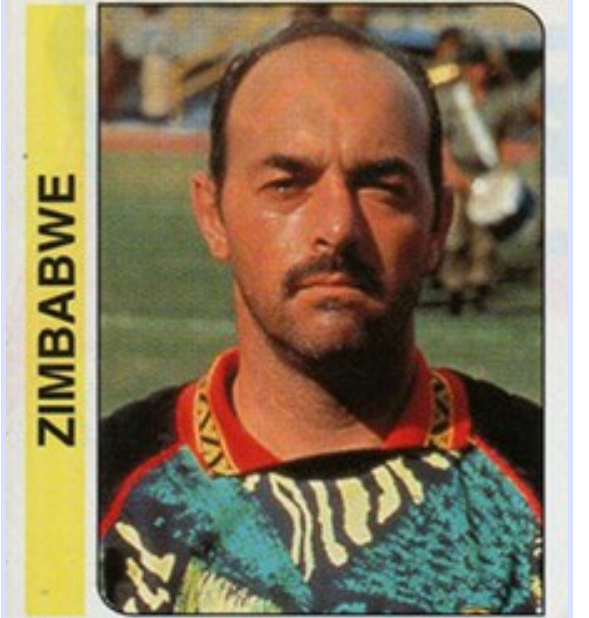90 Minutes from the World Cup: How the Warriors Nearly Made History
When football fans in Zimbabwe look back on the Warriors’ greatest moments, the early 1990s are always remembered as a time of both hope and heartbreak. Bruce Grobbelaar was central to that story, lending his European experience to a squad brimming with local and regional stars under German coach Reinhard Fabisch.
This was the so-called Dream Team (1992–94), arguably the most talented Warriors side ever assembled. It featured household names such as Peter, Madinda and Adam Ndlovu, Francis Shonhayi, Benjamin Nkonjera, Memory Mucherahowa, Willard Khumalo, Rahman Gumbo, Vitalis Takawira, Wilfred Mugeyi, Ephraim Chawanda, Henry McKop, Norman Mapeza, John Phiri, Alois Bunjira, Ernest Chirambadare, Brenna Msiska, and Melusi Nkiwane.
Grobbelaar was the heartbeat in goal, combining his Anfield-honed shot-stopping with inspirational leadership to keep Zimbabwe competitive against Africa’s giants.
Beating Egypt and Standing Tall Against Cameroon
The Warriors’ 1994 FIFA World Cup qualifying campaign remains the closest Zimbabwe has ever come to the global stage.
Egypt toppled: Zimbabwe famously beat the Pharaohs 2–1 in Harare, with goals from Peter Ndlovu and Norman Mapeza. That victory and away draw in neutral France, stunned the continent and put the Warriors within touching distance of qualification.
Cameroon heartbreak: Going into the decisive clash against Cameroon in Yaoundé, Zimbabwe only needed a draw to reach the World Cup finals in the USA. The Warriors held firm for long spells, but a penalty awarded to Cameroon proved decisive. Grobbelaar initially saved the spot-kick, only for the rebound to be converted. Zimbabwe eventually lost, and with it the World Cup dream slipped away.
That 90 minutes remains the single most painful “what if” in the nation’s footballing history.
The South Africa Clash – A Statement of Intent
The Dream Team’s coming-of-age moment arrived on 16 August 1992, in a historic match against South Africa at the National Sports Stadium in Harare – the first meeting between the two nations since the end of apartheid. Zimbabwe were underdogs, but Fabisch fielded a bold young lineup.
Goals: Peter Ndlovu (penalty), Rahman Gumbo (long-range strike), Vitalis Takawira, and a solo masterclass from Peter Ndlovu that left defenders sprawling, gave Zimbabwe a resounding 4–1 victory.
That performance not only silenced doubters but also announced Zimbabwe as a force in African football. Around the same time, Ndlovu made history as the first native black African player to feature in the English Premier League, debuting for Coventry City. There were other native Africans playing in England at the time but they held none African nationalities.
The Narrow Margins of African Football
Zimbabwe’s failure to qualify in 1994 was less about talent and more about timing. Back then, Africa had only three World Cup places, compared to five or more today. Despite topping their group ahead of Egypt and going 13 matches unbeaten, the Warriors were squeezed out by powerhouses Cameroon, Nigeria, and Morocco.
Notably:
Agent Sawu was the second-highest scorer in the qualifiers with six goals, only behind Nigeria’s Rashidi Yekini.
Players like Takawira, Mugeyi, and Adam Ndlovu offered firepower that matched the best in Africa.
Henry McKop, who once finished second in Soccer Star of the Year voting as a striker before converting to left back, added versatility.
The cruel truth is that this team was good enough to play at the World Cup – but African allocation simply left no room.
Afcon Near Misses and Controversies
Zimbabwe also came close in the Africa Cup of Nations (AFCON) qualifiers during the 1990s:
In 1994, a costly home draw with Zambia – still recovering from the tragic air disaster that claimed their national team – ended Zimbabwe’s campaign. Zambia went on to reach the final, led by the mercurial Kalusha Bwalya.
In 1996, Zimbabwe stunned Cameroon 4–1 in Harare, but administrative issues, annulled results due to team withdrawals, and political battles between ZIFA chairman Leo Mugabe and coach Fabisch derailed momentum.
Famously, Mugabe insisted the Warriors play a qualifier in Ebola-stricken DRC, leading to player boycotts, a 5–0 defeat, and the dismissal of Fabisch.
These moments underlined how governance failures repeatedly sabotaged Zimbabwean football during its most promising era.
Legacy of the 1990s Generation
Despite the heartbreak, the 1992–94 Dream Team left an indelible mark:
They gave Zimbabwe its first taste of competing toe-to-toe with Africa’s giants, beating Egypt and South Africa, and nearly eliminating Cameroon.
They produced iconic players who went on to represent the country with distinction in Europe and Africa: Peter Ndlovu, Norman Mapeza, Vitalis Takawira, Agent Sawu, Bruce Grobbelaar, and Wilfred Mugeyi.
They instilled belief in a nation that qualification for major tournaments was possible.
Zimbabwe would finally make its AFCON debut in 2004 under Sunday Chidzambwa, a decade after the Dream Team’s heartbreak. But for many fans, the 1990s side remains the country’s greatest never-to-be story.
Conclusion
For Bruce Grobbelaar and his teammates, the Dream Team years were both a triumph and a tragedy. They showed Zimbabwe could dream of the World Cup, could humble Egypt, and could outplay South Africa. Yet they also revealed how fine the margins were in African football, where one rebound from a saved penalty in Yaoundé changed history.
Today, as Zimbabwe searches for a return to continental relevance, the exploits of Grobbelaar, the Ndlovu brothers, Sawu, Mugeyi, Gumbo, and company remain the benchmark – a reminder that the Warriors have, in the past, stood just 90 minutes away from the world’s greatest stage…ZimbabweWarriorsZone.com


We will be there one day, patience is key as we build a new breed of players from locals to those based abroad